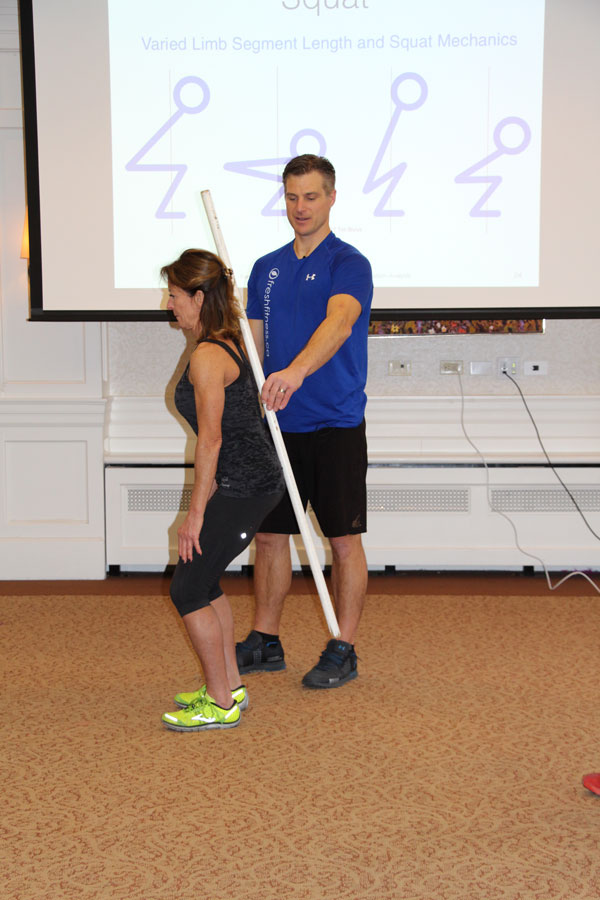
Before any load is added, a person must be able to get them selves in the correct body alignment, and properly activate the correct sequence of muscles to stand and sit. While this will likely seem easy to the trainers and fitness professionals reading this, it is remarkably difficult for many people.Part of this challenge comes from the fact that most people (including many trainers) have never been properly taught to squat. Sure, most people THINK they know how to squat, but few do it correctly.
This fact is seen every day in gyms all over the world. Clients and trainers are engaged in a constant dance of trying to produce fitness improvements on a flawed movement foundation. The sad reality is that injury is not just a possibility, but an inevitability.
The great news is that squatting is VERY simple. Only FOUR key points are needed:
Heels Flat on the Floor
Toes and knees tracking in the same direction
Sternum vertical over balls of feet
Neutral, braced postured maintained throughout full body-specific range of motion
That’s it. Nothing fancy or complicated.
From here, it’s simple to progress or regress the exercise variations. Add load in many forms (front squat, hold weights at sides, bar on shoulders, vary speed, ROM, balance point, time under tension, etc.). The key is to ensure people are maintaining those 4 points at all times, including effective bracing.
Watch a few people squat today and you will see how few people can check off each of these points. Do a few squats yourself. Are you able to maintain form?
Watch the video and let me know your thoughts!
Want to learn more, check out our Functional Movement Course options and
upcoming dates
Connect with our TeachMovement.com Facebook Page
